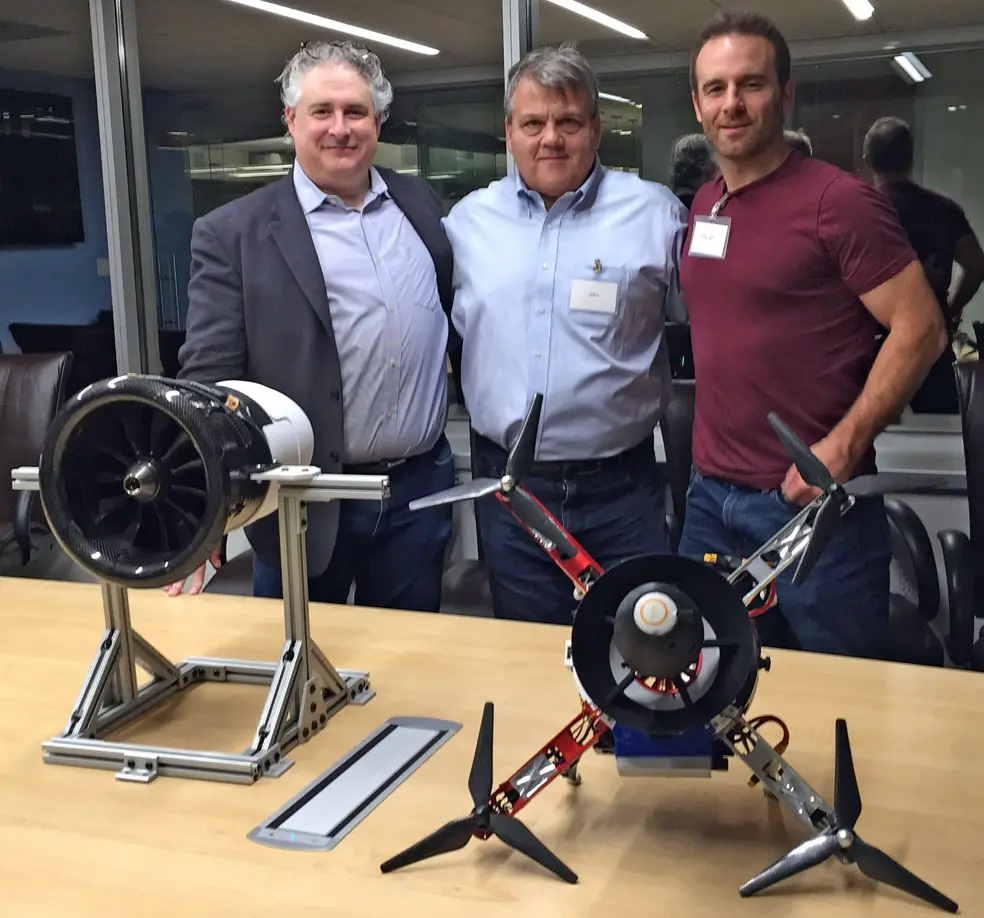Wave Aerospace proposes commercial drone delivery between Stamford and Long Island

A Stamford company”™s proposal to formally establish a corridor across the Long Island Sound for commercial drone delivery is gaining momentum, according to Mark Strauss, co-founder of Wave Aerospace.
“We haven”™t received FAA approval yet,” Strauss said at his office at Serendipity Labs in Stamford. “But we are continuing to have conversations with them and we have the backing of the Stamford mayor”™s office.”
The proposal would involve establishing a roughly 10-mile pathway between Stamford and Huntington, Long Island, with aircraft to fly between 500 and 1,000 feet high in a 1,000-foot-wide corridor. (Consumer drones are restricted to 400 feet in altitude.)
While getting from one of those cities to the other ”” a roughly 14-mile distance ”” can take over an hour by automobile, Wave”™s drones can make the trip in a matter of minutes, Strauss said.
The firm, which has five employees, is focusing much of its efforts on its X-6A drone, which measures about 98.5 inches from rotor hub to rotor hub, has a cruising speed of up to 111 mph and a maximum takeoff weight of 220 pounds.
The X-6A is powered by a combination of jet fuel and a lithium-ion polymer battery and can fly for up to two hours ”” as opposed to the handful of minutes most over-the-counter drones can fly ”” depending on the mission, Strauss said. The end result is a “relatively quiet, clean” vehicle, he said.
Strauss explained that the route is outside New York”™s Class B Controlled Airspace, which covers the majority of New York City and its environs. Both JFK and LaGuardia are Class B airports. It is not permitted to fly in Class B airspace unless prior authorization from Air Traffic Control is obtained. That rule applies to both commercial and hobby flights.
“Stamford is the first city as you go up the coast that is out from under Class B,” Strauss said.

Strauss, who co-founded Wave Aerospace five years ago with Steve Bofill ”“ a former mechanical design engineer at Sikorsky in Stratford, now co-founder and chief of design at VengoLabs in Bethpage ”“ said efforts to get Wave”™s drone corridor off the ground have involved innumerable conversations with the municipalities involved as well as the state and the FAA.
Of the latter, he said, “There are a lot of rules, not necessarily laws, to get through.”
Wave would not be handling deliveries itself, he added. Instead, it would sell or lease its equipment to commercial users and provide training and service.
But while the company ultimately envisions various retailers taking advantage of the corridor ”“ which would be open to all licensed drone operators, not just Wave ”“ Strauss said he expected police and emergency services to be among his first customers.
He and Bofill have met with Suffolk County officials.
“They”™ve had to call for one of the state”™s helicopters in an emergency, which takes time and is very expensive, just so they can get its large light to search for a missing kayaker or someone who”™s lost,” Strauss said. “We can do the same thing within minutes and at a much lower cost, carry a light that”™s more powerful and even use a megaphone to communicate with the person on the ground.”
Wave”™s drones can also fly “in almost any weather,” Strauss said. In general, helicopters are unable to fly inside of clouds when temperatures are in the freezing range and cannot land safely in dense fog or other low-ceiling situations.
Strauss said Wave”™s drones have a number of fail-safe options so that even if they do lose power and plummet, they”™re significantly less likely to cause major harm to pedestrians or property.
As Wave awaits approval from the various agencies for its Long Island Sound corridor, Strauss noted that the race is already on. Last November, New York Gov. Andrew Cuomo announced the completion of a 50-mile unmanned traffic management (UTM) drone corridor, which runs from central New York to the Mohawk Valley.
Considered the first of its kind in the nation, that corridor is intended to provide companies with the space to test unmanned aerial vehicle and UTM technologies in real-world settings to collect data that could set the stage for regular commercial drone use in that area.
Strauss noted that such players as UPS and Boeing have also been experimenting with drone delivery technology. The latter”™s experimental cargo air vehicle may be designed to carry a payload of up to 500 pounds, he said, but its dimensions ”” 17.5 feet long by 20 feet wide by 5 feet tall, and a weight of 1,100 pounds ”” would make it a no-go for the sound.
While there has been no indication when final FAA approval might be forthcoming, Strauss said he was encouraged by the tenor of the ongoing conversations.
“These are very disruptive times,” he said. “Twenty years ago, something like this would have been price-prohibitive, even though the technology was there. Ten years ago, it would have taken millions of dollars to even begin something like this.
“Now we have the ability to build commercial-grade unmanned aircraft for hundreds of thousands of dollars. It”™s exciting to be here when it”™s really just getting started.”